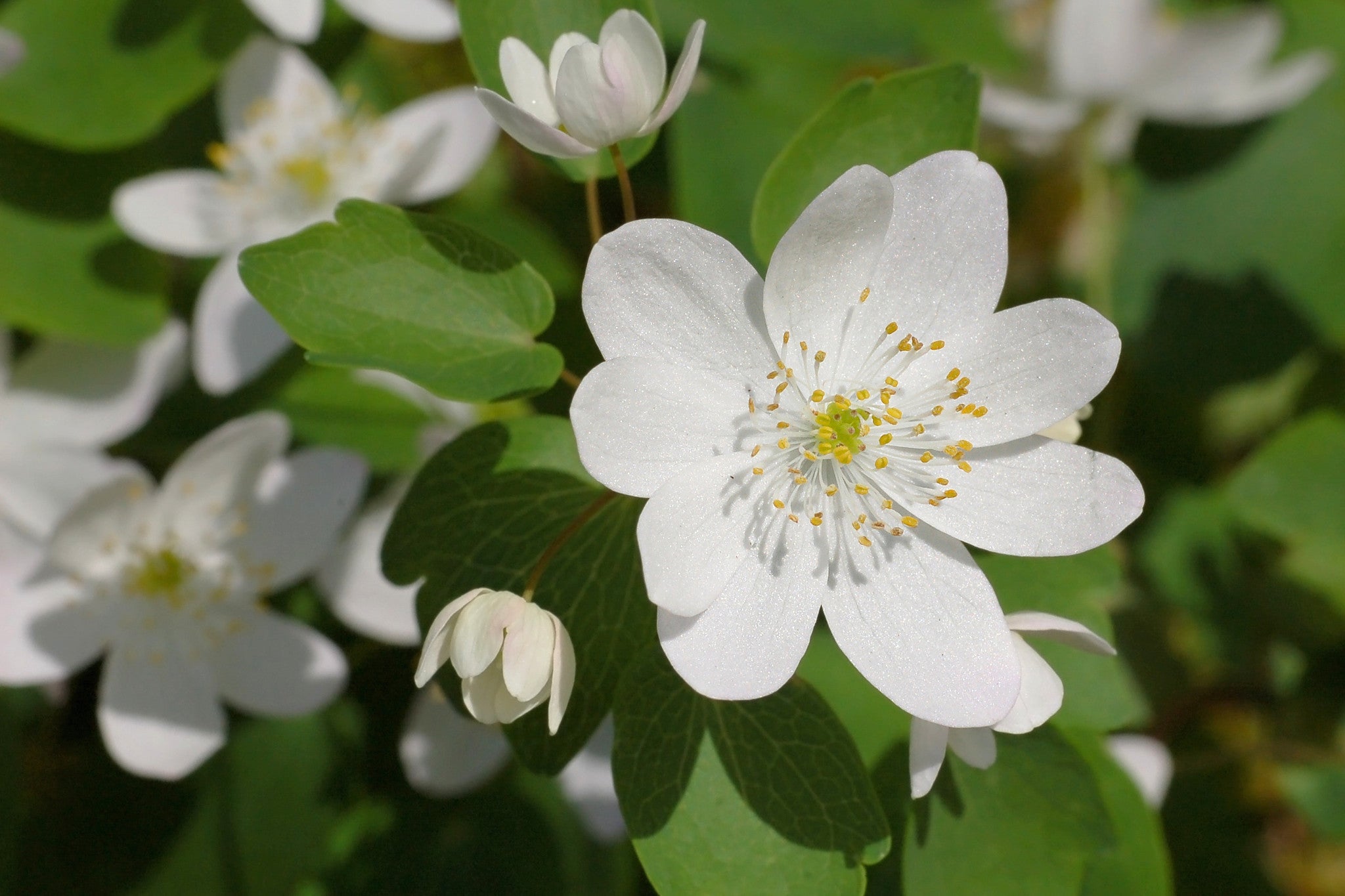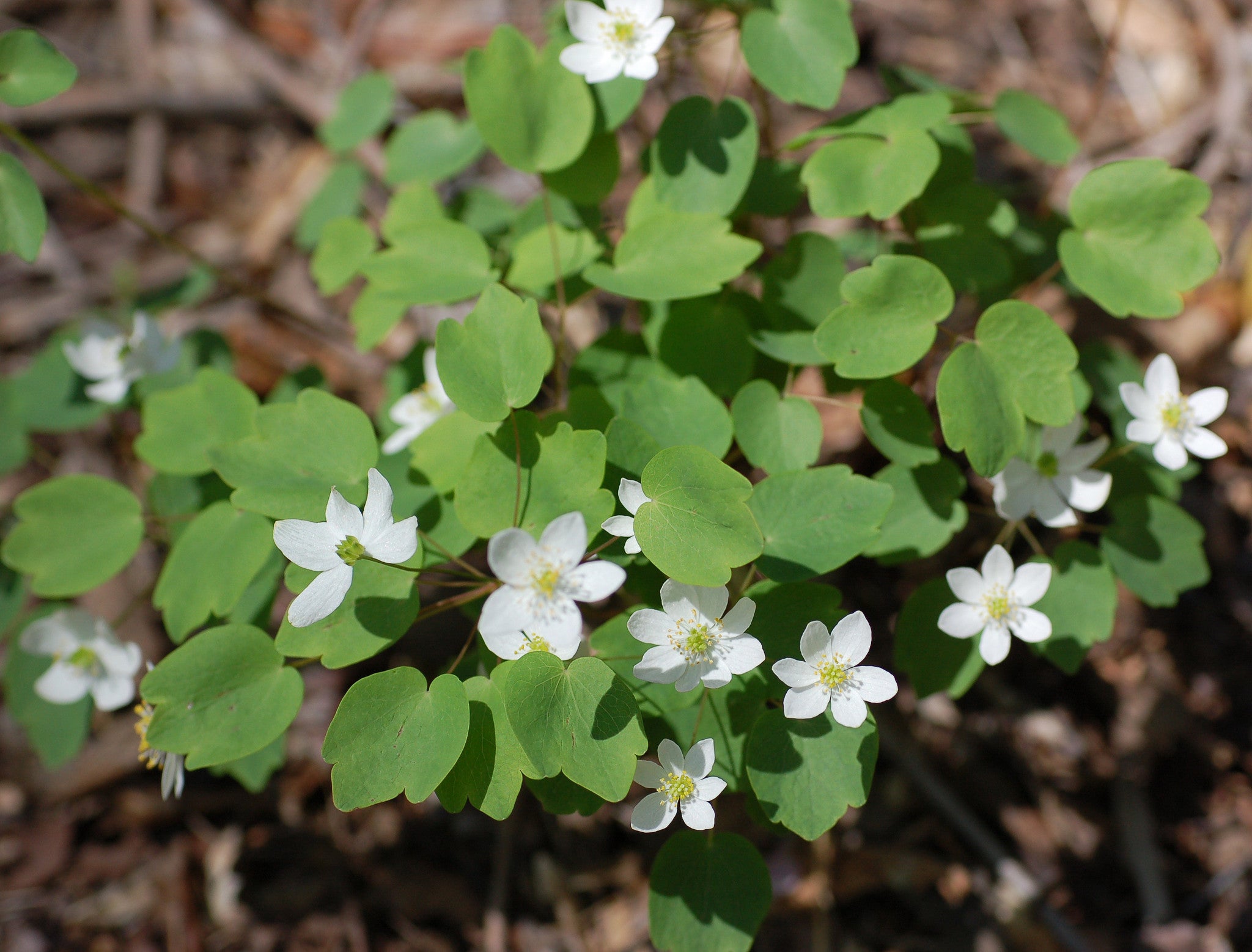Anemonella thalictroides
Approx. 0.5 litre pot
About this cultivar:
Anemonella thalictroides should be called Thalictrum thalictroides but the RHS haven't caught on yet and I'm trying to stick to their conventions. So I'm listing it under Anemonella for now. Anyway, is a dainty, but durable, plant with flowers that resemble Anemone and leaves that resemble thalictrum- the common name is thus Rue Anemone. The botanical name translate as 'Thalictrum that looks like a thalictrum'. Anyway, what's in a name? That which we call an Thalictrum thalictroides by any other name would smell as sweet! (and make a spreading clump to 10cm tall, with divided, blue-green leaves and white flowers 2cm wide in spring and early summer). Sometimes it can grow bit taller... maybe 50cm
- Position: Full sun, partial shade
- Soil: Almost any soil - grows well in Ballyrobert!
-
Flowers: April, May, June
- Other features: Woodland Plant,
- Hardiness: Fully hardy - grows well in Ballyrobert!
- Habit: Clump forming, bushy
- Foliage: Deciduous
- Height: 0 - 22 cm (0 - 0.75 ft)
- Spread: 0 - 22 cm (0 - 0.75 ft)
- Time to full growth: 2 to 5 years
- Plant type: Herbaceous Perennial
- Colour: White, green
- Goes well with: Aster, Rudbeckia. Fuchsia, Hydrangea, and Geranium. Also great on its own.
About this genus:
Thalictrum (thal-ik-trum) is a genus of 120-200 species of herbaceous perennial flowering plants in the buttercup family (Ranunculaceae) native mostly to temperate regions. Once upon a time, the newborn infant was placed upon a pillow filled with Thalictrum to ensure a prosperous life. Thalictrum come from the Greek thallo which means “to flourish,” and it does, with elegant foamlike sprays that resemble Baby’s Breath, and rounded, finely cut, compound foliage.Despite their common name of "meadow-rue", Thalictrum species are unrelated to the true rue (family Rutaceae), but resemble its members in having the petiole twice or thrice divided. They are usually found in shaded or damp locations, with a sub-cosmopolitan range throughout most of the Northern Hemisphere and also south to southern Africa and tropical South America, but absent from Australasia. It is most common in temperate regions of the world, twenty-two species are found in North America.
The leaves are commonly glaucous blue-green in colour. The flowers are small and are apetalous; in other words they have no petals. They have have numerous long stamens, often brightly white, yellow, pink or pale purple, and are produced in conspicuous dense inflorescences. In some species the sepals are large, brightly coloured and petal-like, but in most they are small and fall when the flower opens or soon after.
Thalictrum is tolerant of a wide range of growing conditions, depending on the species. However, they generally prefer an moist soil in sun or part shade.




